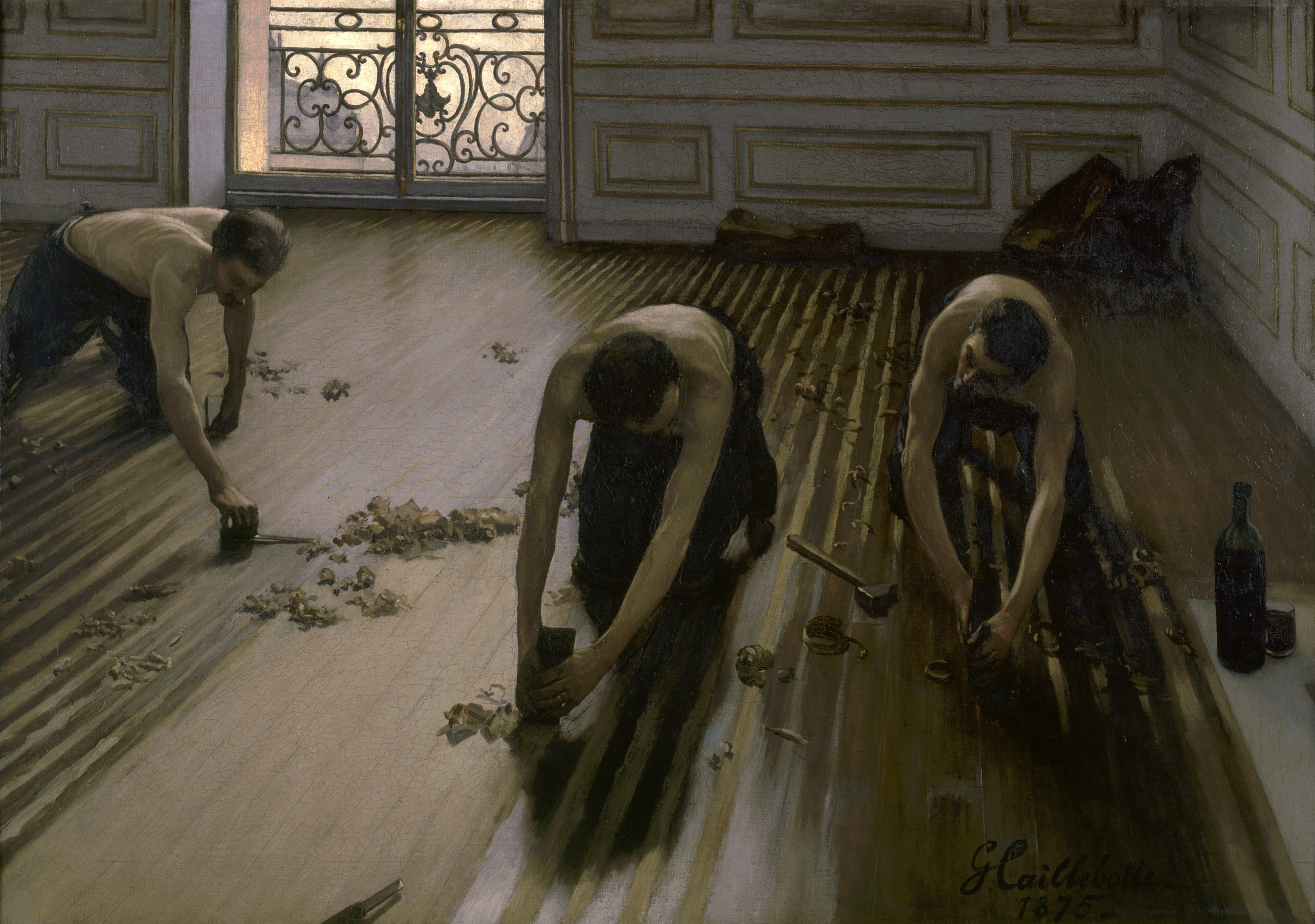 |
| Gustave Caillebotte, The Floor Scrapers, 1875 |
This Impressionist piece contains three workers on their knees working tediously to scrape the floors of a bourgeois apartment. The three shirtless men seem to represent a form of masculinity and strength as they are the workforce behind creating such an extravagant setting, but their hunched poses could be hinting at vulnerability and exhaustion instead. The 19th century was filled with wealthy people attempting to impress their snobby friends with baller houses and fancy clothes, which is cool until you realize that their are other guys doing labor jobs for some terrible pay.
The renovation occurring in the apartment also references the modernization of Paris with new technological developments. The city is getting filled with railroad stations, crowded streets, and luxury apartment buildings.
The costs for all these improvements are the hardships of manual labor. The floor scrapings are curled just like the curled men. The aren't in a comfortable position, and the rich would never understand how complex and difficult it is to create what they desire. That's probably why this painting was first rejected, as people did not enjoy how the bodies were portrayed.








